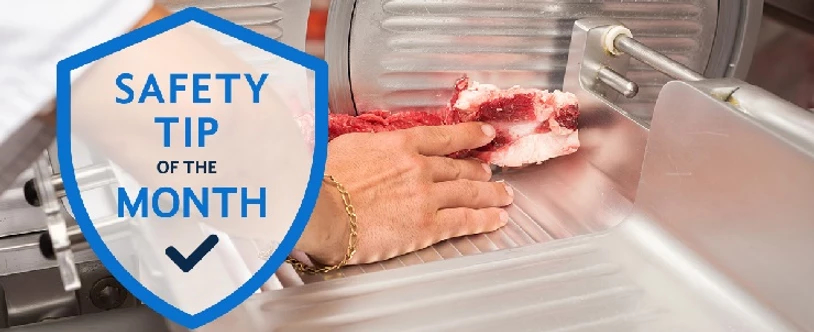A 17-year-old bagger employed at his family’s grocery store was asked for ground beef by a customer. None was available, so he decided to operate the grinder, despite the fact that workers under the age of 18 are prohibited by OSHA from operating meat grinders and slicers. When the meat became stuck in the grinder bowl, he used his hand to push the meat down into the “worm,” a rotating machine part shaped like a corkscrew. The worm caught his hand and fed it into the grinder’s barrel, amputating his hand and part of his arm.
If he had been older and better trained on the hazards of that equipment and the importance of lockout/tagout, he would not have reached into an energized machine. And, as a young worker, he was more vulnerable for a serious injury, according to EHS Today.
Accidents involving energized machinery can be prevented with proper lockout and tagout procedures. OSHA estimates that compliance with the Control of Hazardous Energy (Lockout/Tagout) prevents 50,000 injuries and 120 fatalities each year.
Hazardous Energy
OSHA says that hazardous energy may be electrical, but it can also come from other types of energy sources, including chemical, thermal, pneumatic, hydraulic or mechanical.
Grocery workers may be exposed to hazardous energy when they are performing cleaning or maintenance on a machine. For example, a worker may need to reach inside a machine to remove an obstruction, or a worker may get close to a machine to repair it. If the machine turns on unexpectedly, the worker may be seriously, or even fatally, injured.
The following are examples of grocery equipment that should be locked out before service is performed:
- Slicers
- Cubers/tenderizers
- Grinders
- Meat saws
- Mixers
- Balers
- Compactors
- Forklifts
- Electric pallet jacks
Industrial ovens - Bread slicers
- Can smackers
Lockout/Tagout Procedures
Lockout and tagout procedures are designed to prevent machines from becoming energized unexpectedly during maintenance and cleaning.
- Lockout procedures use locks or other devices that hold an energy-isolating device in a safe position to prevent the machinery or equipment from becoming energized.
- Tagout procedures use warning devices that are securely fastened to an energy-isolating device to show that the machine or equipment must not be operated until the tagout device has been removed.
In addition to use of the lockout or tagout devices, a good program should include the following:
- Energy control procedures that document exactly what information an authorized employee must know to complete the lockout or tagout.
- Regular inspections to ensure that the procedures are being followed correctly. These inspections should take place annually at a minimum, and they should be performed by an authorized employee who is not involved in the energy control procedure.
- Worker training to ensure that workers understand how the procedures work and why they are important. Retraining will be needed when job assignments, equipment or energy control procedures change, or when there is a deviation from energy control procedures. The employer must certify the training.
More Resources
For more information on lockout/tagout programs, sees the following resources:
- OSHA’s LOTO Tutorial summarize key components of the lockout/tagout standard in plain English.
- OSHA’s Lockout/Tagout Fact Sheet provides information on the standard for the control of hazardous energy.
- OSHA’s page on the Control of Hazardous Energy (Lockout/Tagout) provides an overview and links to additional information.
Download our Lockout/Tagout Procedures Safety Tip and regularly train and monitor your team to ensure best practices are followed during machine maintenance and cleaning operations. Need more risk management advice? Talk to the grocery insurance professionals at RiskPoint Insurance today.
| Joe Scarpello | Melissa Johnson |
| 253.444.5584 | 253.444.5654 |


